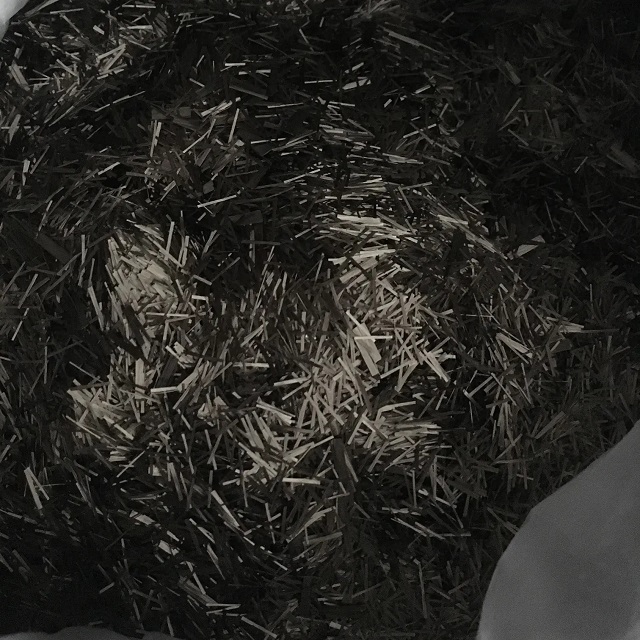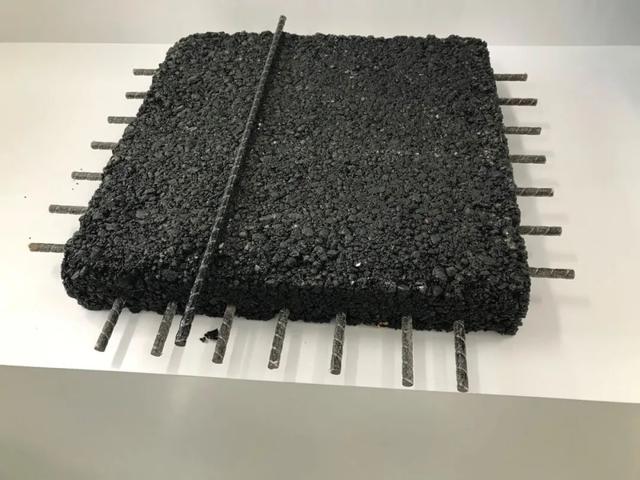Chemical composition of basalt
It is well known that the Earth’s crust is composed of igneous, sedimentary and metamorphic rocks. Basalt is a type of igneous rock. Igneous rocks are rocks formed when magma erupts underground and condenses on the surface. Igneous rocks containing more than 65% SiO2 are acidic rocks, such as granite, and those containing less than 52% S0 are called basic rocks, such as basalt. Between the two are neutral rocks such as andesite. Among the basalt components, the content of SiO2 is mostly between 44%-52%, the content of Al2O3 is between 12%-18%, and the content of Fe0 and Fe203 is between 9%-14%.
Basalt is a refractory mineral raw material with a melting temperature above 1500℃. The high iron content makes the fiber bronze, and it contains K2O, MgO and TiO2 which play an important role in improving the waterproof and corrosion resistance of the fiber.
Basalt ore belongs to volcanic magma ore, which has natural chemical stability. Basalt ore is a single-component raw material for enrichment, melting and uniform quality. Unlike glass fiber production, basalt fiber production raw materials are natural and ready-made.

In recent years, a lot of research work has been done to screen ores suitable for the production of continuous basalt fiber raw materials, especially for the production of basalt fibers with set characteristics (such as mechanical strength, chemical and thermal stability, electrical insulation, etc.), specific ores must be used Chemical composition and fiber forming properties. For example: the range of ore chemical composition used in the production of continuous basalt fiber is shown in the table.
| Chemical composition | SiO2 | Al2O3 | Fe2O3 | CaO | MgO | TiO2 | Na2O | Other impurities |
| Min% | 45 | 12 | 5 | 4 | 3 | 0.9 | 2.5 | 2.0 |
| Max% | 60 | 19 | 15 | 12 | 7 | 2.0 | 6.0 | 3.5 |
Nature has provided the main energy consumption of basalt ore. Under natural conditions, basalt ore undergoes enrichment, homogenization of chemical components and melting in the deep part of the earth. Even nature considers pushing basalt ore to the surface of the earth in the form of mountains for human use. According to statistics, about 1/3 of the mountains are composed of basalt.
According to the analysis data of the chemical composition of basalt ore, basalt raw materials are almost all over the country, and the price is 20 yuan/ton, and the cost of raw materials can be ignored in the production cost of basalt fiber. There are mining sites suitable for continuous basalt fiber production in many provinces in China, such as: four, Heilongjiang, Yunnan, Zhejiang, Hubei, Hainan Island, Taiwan and other provinces, some of which have produced continuous basalt fiber on industrial test equipment. Chinese basalt ores are different from European ores. From a geological point of view, Chinese basalt ores are relatively “young”, and they do not have very distinctive features, that is, the so-called original ore scars. Through the analysis of Chinese provinces such as Sichuan, Heilongjiang, Yunnan, Zhejiang, and Hubei , the study of basalt ores in the middle and lower reaches of the Yangtze River, Hainan and other regions shows that there is no original rock in these basalt ores, and there are only some typical yellow iron oxide thin layers on the surface. This is very beneficial to continuous basalt fiber production, and the raw material price and processing cost are low.
Basalt is an inorganic silicate. It has been tempered in volcanoes and furnaces, from hard rocks to soft fibers, light scales, and tough bars. The material has high temperature resistance (>880C) and low temperature resistance (<-200C) , low thermal conductivity (heat insulation), sound insulation, flame retardant, insulation, low moisture absorption, corrosion resistance, radiation resistance, high breaking strength, low elongation, high elastic modulus, light weight and other excellent performance and excellent processing performance, It is a completely new material: it does not produce toxic substances in the normal production and processing process, and has no waste gas, waste water, and waste residue discharge, so it is called the pollution-free “green industrial material and new material” in the 21st century.
Compared with glass fiber, which is widely used in construction, chemical industry and other industries, it is obvious that basalt fiber and its composite materials have high mechanical strength, good physical and chemical properties, and can be used to make high-end products. Compared with other materials, the overall performance of the two is comparable. Some properties of basalt fiber are better than carbon fiber, and its cost is less than one-tenth of carbon fiber according to the current market price. Therefore, basalt fiber is a new fiber with low cost, high performance and ideal cleanliness after carbon fiber, aramid fiber and polyethylene fiber. The United States Texas Basalt Continuous Fiber Industry Alliance pointed out: “Basalt continuous fiber is a low-cost substitute for carbon fiber and has a series of excellent properties. Most importantly, because it is taken from natural ore without any additives, it is by far the only non-environmental pollution and non-toxic. Carcinogenic green and healthy glass fiber products have broad market demand and pre-application”
Basalt ore has been deposited on the surface of the earth for millions of years and has been subjected to various climatic factors. Basalt ore is one of the strongest silicate ores. Fibers made of basalt have natural strength and stability against corrosive media. Durable, electrical insulating, basalt ore is a natural and environmentally friendly clean raw material.
Post time: Dec-19-2022

